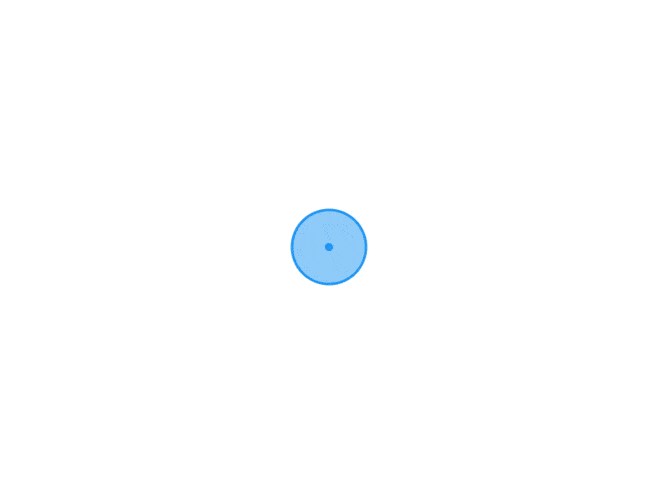最近看到了许多关于 :has() 选择器的知识点,在此总结下来。
MDN 对 :has() 选择器 的解释是这样的:
CSS 函数式 伪类 :has() 表示一个元素,如果作为参数传递的任何 相对选择器 在锚定到该元素时,至少匹配一个元素。这个伪类通过把 可容错相对选择器列表 作为参数,提供了一种针对引用元素选择父元素或者先前的兄弟元素的方法。下面一起来感受下 :has() 选择器的强大之处吧。
:has() 选择器选择父元素和前面的兄弟元素
邻接兄弟选择器(+)用来选中恰好处于另一个在继承关系上同级的元素旁边的物件。例如,选中所有紧随<p>元素之后的<img>元素:
p + img {
}通用兄弟关系选择器(~)用来选中一个元素后面的所有兄弟元素。例如,选中<p>元素之后的所有的<img>元素:
p ~ img {
}css 并没有提供直接选择父元素或者前面的兄弟元素的选择器,但 :has() 可以做到这点。
1、比如选择所有包含 <p>元素的父元素:
:has(p) {
}2、选择直接后代元素包含 <p>元素的父元素:
:has(> p) {
}3、选择直接后代元素包含 <p>元素的父级标签名是 div父元素:
div:has(> p) {
}4、选择 <p>元素的相邻的前一个标签名是 div的兄弟元素:
div:has(+ p) {
}5、选择 <p>元素的前面所有标签名是 div的兄弟元素:
div:has(~ p) {
}:has() 选择器中的 且 和 或
在 :has() 选择器中表示 且 和 或 很简单,例如:
p:has(.a):has(.b) 表示选择同时包含子元素 a 和 子元素 b 的 元素 p
p:has(.a, .b) 表示选择包含子元素 a 或者包含子元素 b 的 元素 p
:has() 选择器选择一个范围内的元素
现在有如下元素
<div>
<h2>标题开始(选择第一行字体为绿色,最后一行字体为红色)</h2>
<p>h2中间第一行</p>
<h4>h2中间第二行</h4>
<h5>h2中间最后一行</h5>
<h2>标题结束</h2>
</div>要求选择第一行字体为绿色,最后一行字体为红色。需要注意的是,中间元素可以是任意的。
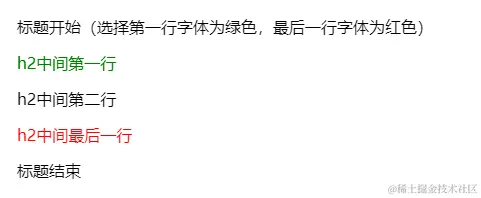
使用 :has() 实现上面效果,可以这么做
/* 选择 h2 中间第一行 */
h2+ :has(~ h2) {
color: green;
}
/* 选择 h2 中间最后一行 */
h2~ :has(+ h2) {
color: red;
}h2 + :has(~ h2) 表示选择紧跟着 h2 的并且后面还有 h2 元素的兄弟元素。也就选择到了 h2 范围内的第一个元素。
h2 ~ :has(+ h2) 表示选择 h2 后面的兄弟元素,并且该兄弟元素的下一个兄弟元素是 h2,也就选择到了 h2 范围内最后一个元素
那如果要选择中间所有元素呢,可以这样做
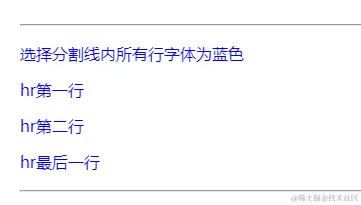
/* 选择 hr 中间所有行 */
hr~ :has(~ hr) {
color: blue;
}:has()选择器的应用
1、CSS :has() 选择器之星级评分
关于星级评分,之前写过一篇文章分享过三种方式使用纯 CSS 实现星级评分。
这里介绍下使用 :has() 选择器 + :not() 选择器 实现星级评分的方式。
星级评分效果包括鼠标滑入和点击,滑入或点击到第几颗星的位置,该位置之前的星高亮,之后的星不高亮或者有高亮的则取消高亮;
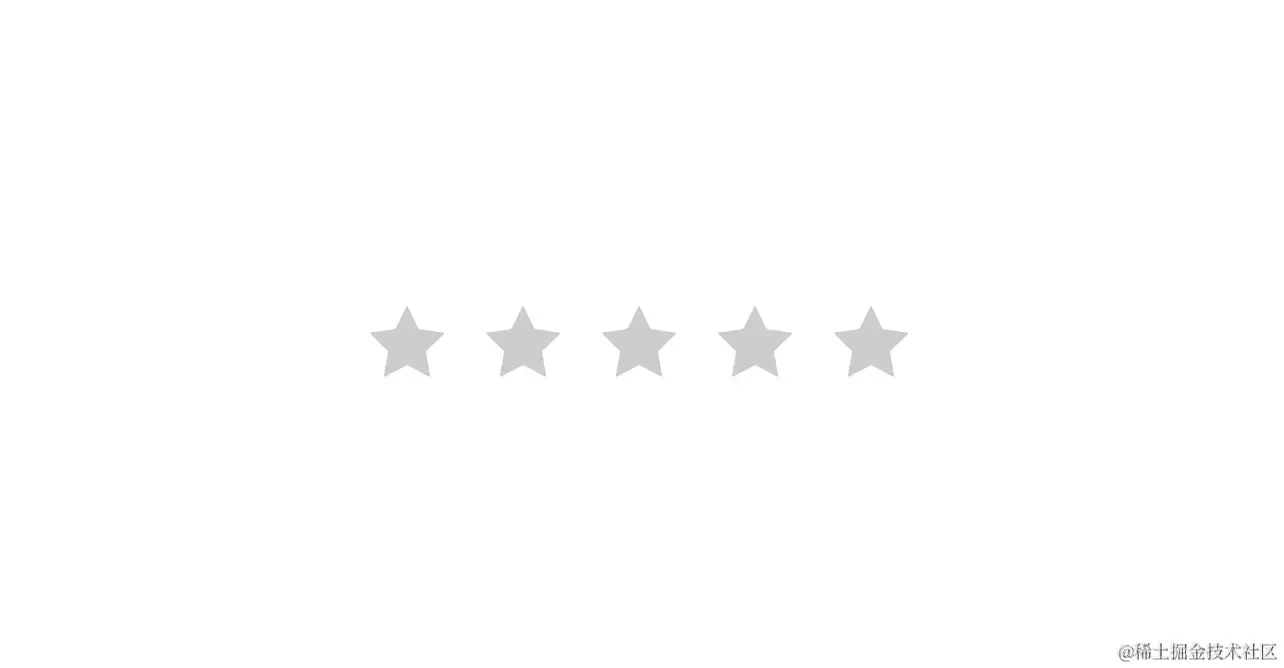
html 结构
<div>
<input type="radio" name="radio" id="radio1">
<label for="radio1">
<svg xmlns="http://www.w3.org/2000/svg" viewBox="0 0 1024 1024">
<path fill="currentColor"
d="M283.84 867.84 512 747.776l228.16 119.936a6.4 6.4 0 0 0 9.28-6.72l-43.52-254.08 184.512-179.904a6.4 6.4 0 0 0-3.52-10.88l-255.104-37.12L517.76 147.904a6.4 6.4 0 0 0-11.52 0L392.192 379.072l-255.104 37.12a6.4 6.4 0 0 0-3.52 10.88L318.08 606.976l-43.584 254.08a6.4 6.4 0 0 0 9.28 6.72z">
</path>
</svg>
</label>
<input type="radio" name="radio" id="radio2">
<label for="radio2">
<svg xmlns="http://www.w3.org/2000/svg" viewBox="0 0 1024 1024">
<path fill="currentColor"
d="M283.84 867.84 512 747.776l228.16 119.936a6.4 6.4 0 0 0 9.28-6.72l-43.52-254.08 184.512-179.904a6.4 6.4 0 0 0-3.52-10.88l-255.104-37.12L517.76 147.904a6.4 6.4 0 0 0-11.52 0L392.192 379.072l-255.104 37.12a6.4 6.4 0 0 0-3.52 10.88L318.08 606.976l-43.584 254.08a6.4 6.4 0 0 0 9.28 6.72z">
</path>
</svg>
</label>
<input type="radio" name="radio" id="radio3">
<label for="radio3">
<svg xmlns="http://www.w3.org/2000/svg" viewBox="0 0 1024 1024">
<path fill="currentColor"
d="M283.84 867.84 512 747.776l228.16 119.936a6.4 6.4 0 0 0 9.28-6.72l-43.52-254.08 184.512-179.904a6.4 6.4 0 0 0-3.52-10.88l-255.104-37.12L517.76 147.904a6.4 6.4 0 0 0-11.52 0L392.192 379.072l-255.104 37.12a6.4 6.4 0 0 0-3.52 10.88L318.08 606.976l-43.584 254.08a6.4 6.4 0 0 0 9.28 6.72z">
</path>
</svg>
</label>
<input type="radio" name="radio" id="radio4">
<label for="radio4">
<svg xmlns="http://www.w3.org/2000/svg" viewBox="0 0 1024 1024">
<path fill="currentColor"
d="M283.84 867.84 512 747.776l228.16 119.936a6.4 6.4 0 0 0 9.28-6.72l-43.52-254.08 184.512-179.904a6.4 6.4 0 0 0-3.52-10.88l-255.104-37.12L517.76 147.904a6.4 6.4 0 0 0-11.52 0L392.192 379.072l-255.104 37.12a6.4 6.4 0 0 0-3.52 10.88L318.08 606.976l-43.584 254.08a6.4 6.4 0 0 0 9.28 6.72z">
</path>
</svg>
</label>
<input type="radio" name="radio" id="radio5">
<label for="radio5">
<svg xmlns="http://www.w3.org/2000/svg" viewBox="0 0 1024 1024">
<path fill="currentColor"
d="M283.84 867.84 512 747.776l228.16 119.936a6.4 6.4 0 0 0 9.28-6.72l-43.52-254.08 184.512-179.904a6.4 6.4 0 0 0-3.52-10.88l-255.104-37.12L517.76 147.904a6.4 6.4 0 0 0-11.52 0L392.192 379.072l-255.104 37.12a6.4 6.4 0 0 0-3.52 10.88L318.08 606.976l-43.584 254.08a6.4 6.4 0 0 0 9.28 6.72z">
</path>
</svg>
</label>
</div>为了使星星有点击效果,利用 radio + label 的方式实现点击效果;label 代表星星。
当点击星星时,高亮当前星星
input:checked+label {
color: gold;
}当鼠标移入星星时,高亮当前星星,并且该位置之后的星星取消高亮;
label:hover {
color: gold;
&~label {
color: #ccc !important;
}
}让当前位置之前的所有星星也高亮,可以利用 :not ,排除掉当前位置和当前位置之后的星星。
label:not(:hover, :hover ~ *) {
color: gold;
}并且只有鼠标滑入时添加这些效果。
div:has(label:hover) label:not(:hover, :hover ~ *) {
color: gold;
}同样,当点击星星时,点亮当前选择的之前所有的星星也如此
div:has(input:checked) label:not(input:checked ~ label) {
color: gold;
}2、CSS :not 和 :has() 模拟 :only-of-type
有下面的 html 结构
<div>
<p>第一页</p>
<p class="this">第二页</p>
<p>第三页</p>
<p>第四页</p>
</div>要选择类名为 this 的元素,并设置颜色为红色,使用 .this{color:red;} 可以轻松做到。
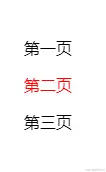
如果现在有两个 div 元素块
<div>
<p>第一页</p>
<p class="this">第二页</p>
<p>第三页</p>
<p>第四页</p>
</div>
<div>
<p>第一页</p>
<p class="this">第二页</p>
<p class="this">第三页</p>
<p>第四页</p>
</div>现要求选择 div 的子元素中只有含有一个类名为 this 的元素(也就是第一个 div 元素块),并且设置其颜色为红色,该怎么做呢?
:only-of-type 代表了任意一个元素,这个元素没有其他相同类型的兄弟元素。
但 :only-of-type 判断是否有相同类型的依据是标签名,而不是类名。所以并不能达到想要的效果。
/* 这种写法是无效的,无法判断元素有没有其他相同的类名。 */
.this:only-of-type {
color: red;
}
/* 这种写法是有效的,但判断的是没有相同的 p 的元素,显然无法满足上面的要求,但能匹配下面 ul 中的 p */
p:only-of-type {
color: red;
}<ul>
<li>第一页</li>
<li class="this">第二页</li>
<li class="this">第三页</li>
<p>第四页</p>
</ul>而 :has 能做到,要选择前后没有相同类名的元素 ,也就是排除前后的 .this 。
排除前面的 .this
/* 表示选择前面没有 .this 的 .this */
.this:not(.this ~) {
}排除后面的 .this,
/* 表示排除后面有 .this 的 .this */
.this:not(:has(~ .this)) {
}两个做并集,也就选择到了唯一的 .this
.this:not(:has(~ .this)):not(.this ~ *) {
color: red;
}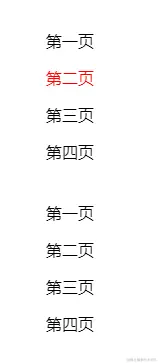
3、CSS :has() 选择器之模仿 mac 电脑 dock 栏
利用 :has() 可以选择到前面的兄弟元素的特点,还能做出下面的动画效果
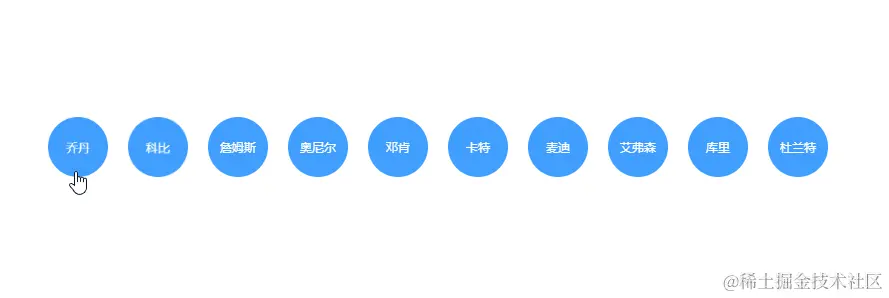
当鼠标滑入到一个元素时,该元素放大,该元素的前一个元素和后一个元素缩小,除了这三个元素之外的其他元素缩的更小并且有一定透明度;
html 结构如下
<div class="box">
<div class="son">乔丹</div>
<div class="son">科比</div>
<div class="son">詹姆斯</div>
<div class="son">奥尼尔</div>
<div class="son">邓肯</div>
<div class="son">卡特</div>
<div class="son">麦迪</div>
<div class="son">艾弗森</div>
<div class="son">库里</div>
<div class="son">杜兰特</div>
</div>关键 css 代码
.son {
...
...
...
&:hover {
background-color: #67c23a;
transform: scale(1.4);
&+.son {
transform: scale(1.1); // 后一个相邻的兄弟元素
}
}
}让前一个元素也缩放为原来的 1.1
/* 选择存在 后一个相邻的被hover的兄弟元素 的元素 */
.son:has(+ .son:hover) {
transform: scale(1.2);
}然后对这三个元素之外的其他元素缩放为原来的 0.8
.box:has(.son:hover) .son:not(:hover, :has(+ :hover), .son:hover + *) {
transform: scale(0.8);
opacity: 0.7;
}.box:has(.son:hover) 表示选择子元素 son 被 hover 时的 .box
.son:not(:hover, :has(+ :hover), .son:hover + *) 表示排除 son 元素里面被 hover 的元素,被 hover 的元素的前一个邻接的兄弟元素,被 hover 的元素的后一个邻接的兄弟元素;
4、CSS :has() 选择器之单选题
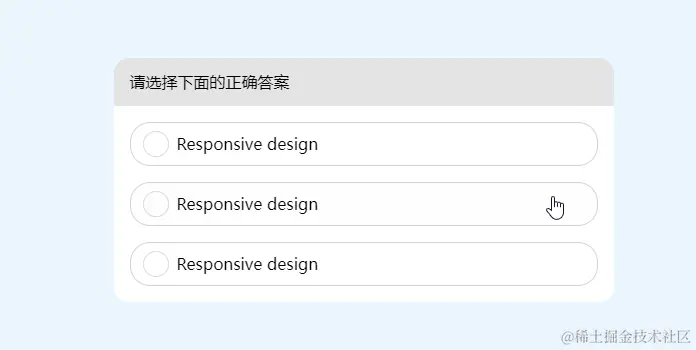
这是个有趣的应用,当选择的是错误的选项时,选择题的标题和当前选择项标红。并且会给正确的选项添加动画效果提示用户这才是正确选项。
这里用 data-correct="false" 表示错误的选项,data-correct="true" 表示正确的选项。
<input type="radio" name="option" data-correct="false" id="option1" />
<label for="option1">Responsive design</label>
<input type="radio" name="option" data-correct="true" id="option2" />
<label for="option2">Responsive design</label>
<input type="radio" name="option" data-correct="false" id="option3" />
<label for="option3">Responsive design</label>选择错误选项时,标红当前选项。选择正确选项时标绿当前选项。
.question {
--correct: #5ed235; /* 正确选项的颜色 */
--wrong: #f83d56; /* 错误选项的颜色 */
--wrong-bg: rgba(248, 61, 86, 0.8);
--correct-bg: rgb(94, 210, 53, 0.8);
}
input[data-correct="false"]:checked+label {
color: #fff;
background-color: var(--wrong);
border-color: var(--wrong);
}
input[data-correct="true"]:checked+label {
color: #fff;
background-color: var(--correct);
border-color: var(--correct);
}选择错误选项时,标红标题; 这里用 :has 选择器获取子元素中有错误选项选中时。
.question:has(input[data-correct="false"]:checked) {
.questionHeader {
box-shadow: inset 0 7px 0 0 var(--wrong);
background-color: var(--wrong-bg);
}
}并且给正确选项增加提示动画
.question:has(input[data-correct="false"]:checked) {
input[data-correct="true"]+label {
animation: flash 2s infinite;
}
}
@keyframes flash {
0% {
background-color: white;
}
25% {
background-color: #5ed235;
}
50% {
background-color: white;
}
75% {
background-color: #5ed235;
}
100% {
background-color: white;
}
}选择正确选项时,标绿标题;
.question:has(input[data-correct="true"]:checked) {
.questionHeader {
box-shadow: inset 0 7px 0 0 var(--correct);
background-color: var(--correct-bg);
}
}总结
本文介绍了 :has()选择器的基本用法以及四个实际应用;
- 选择父元素和前面的兄弟元素
:has()选择器中的且和或- 选择一个范围内的元素
在 :has()选择器出来之前,使用 CSS 是无法直接选择到父级元素和前面的兄弟元素的,但 :has()选择器的出现使这个变成了可能;
如果对本文感兴趣或对你有帮助,麻烦动动你们的发财手,点点赞~
